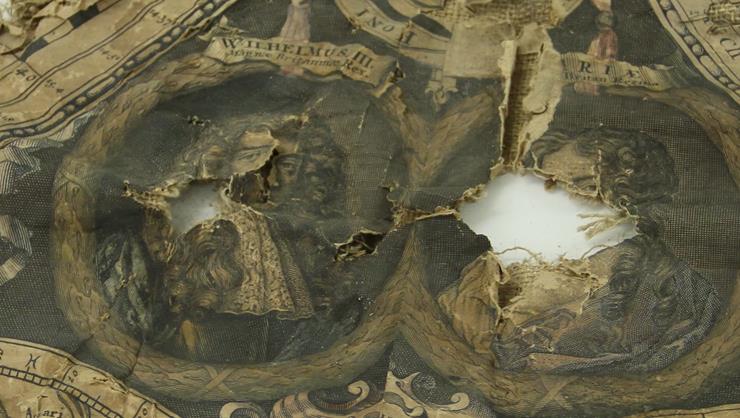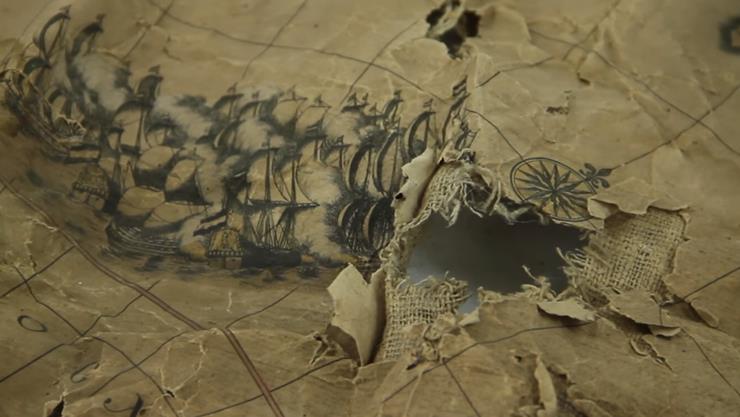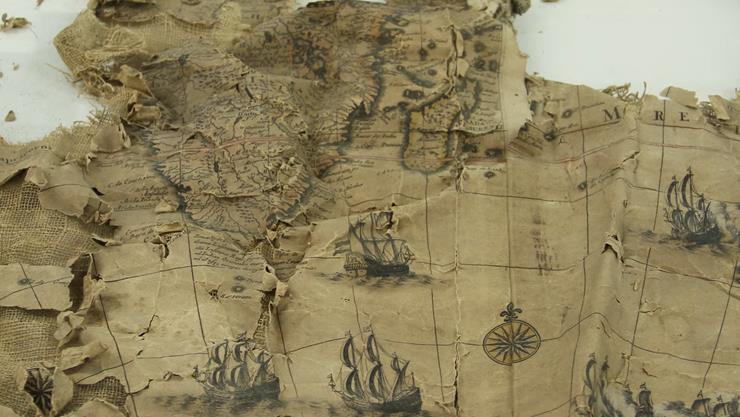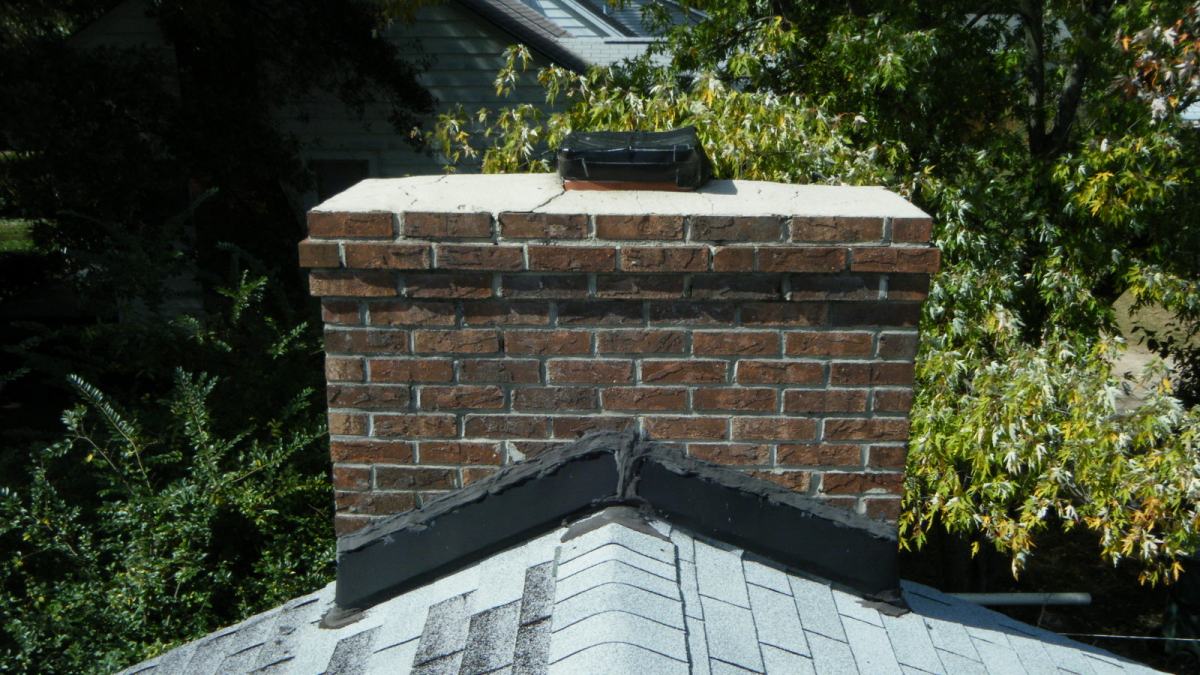Adorned With Famous Faces
 It was adorned with the faces of King William III of England and his better half, Queen Mary. These representations helped the experts date the map to around 1690 AD in light of the fact that, at the time, William III controlled over both Ireland and Scotland too. There were likewise some different components that helped date the map further.
It was adorned with the faces of King William III of England and his better half, Queen Mary. These representations helped the experts date the map to around 1690 AD in light of the fact that, at the time, William III controlled over both Ireland and Scotland too. There were likewise some different components that helped date the map further.
Sea Warfare
 Various ocean fights were additionally drawn on the map, a significant number of them showed the Dutch colonization of Portugal and China: the two occasions would have been enormous news at the time. Once the preservationists got their hands on it, they got an intriguing understanding of life over 300 years back.
Various ocean fights were additionally drawn on the map, a significant number of them showed the Dutch colonization of Portugal and China: the two occasions would have been enormous news at the time. Once the preservationists got their hands on it, they got an intriguing understanding of life over 300 years back.
Something Creepy
 Not everything on the map was glorifying, the creepier illustrations on the guide included something evading to the Black Legend, which was a reasonable depiction of the affliction brought upon indigenous people groups in Latin America by Spanish invaders. It obviously painted the Dutch in a fine light while their foes the Spanish were painted as conquerors. But, they had no idea as to who had painted it.
Not everything on the map was glorifying, the creepier illustrations on the guide included something evading to the Black Legend, which was a reasonable depiction of the affliction brought upon indigenous people groups in Latin America by Spanish invaders. It obviously painted the Dutch in a fine light while their foes the Spanish were painted as conquerors. But, they had no idea as to who had painted it.
Who Was The Mapmaker?
 Scientists found that the map was initially made by mapmaker George Wildey, a well known London mapmaker at the time. But, there was a twist, Wildey was, in reality, better known for duplicating maps at first drafted by others. This was clearly the case with the Aberdeen outline, as starting points lay more in Amsterdam and the Netherlands.
Scientists found that the map was initially made by mapmaker George Wildey, a well known London mapmaker at the time. But, there was a twist, Wildey was, in reality, better known for duplicating maps at first drafted by others. This was clearly the case with the Aberdeen outline, as starting points lay more in Amsterdam and the Netherlands.
A Copy
 All things considered, who yet the Dutch would paint the Dutch in such a positive light. Scientists believed that it was copied from a guide made by Schenk and Valk, the more mainstream Dutch mapmakers in the seventeenth century.Wildey more likely than not included William III and his significant other to include a British touch.
All things considered, who yet the Dutch would paint the Dutch in such a positive light. Scientists believed that it was copied from a guide made by Schenk and Valk, the more mainstream Dutch mapmakers in the seventeenth century.Wildey more likely than not included William III and his significant other to include a British touch.
Why Hide It?
 Scientists hypothesized that it was initially concealed in light of the King’s Protestant religious convictions. All things considered, a large portion of Scotland and Ireland are Roman Catholic and would be a challenge to discover a relic of a Protestant, English King hanging in an Aberdeen parlor some time ago.
Scientists hypothesized that it was initially concealed in light of the King’s Protestant religious convictions. All things considered, a large portion of Scotland and Ireland are Roman Catholic and would be a challenge to discover a relic of a Protestant, English King hanging in an Aberdeen parlor some time ago.
